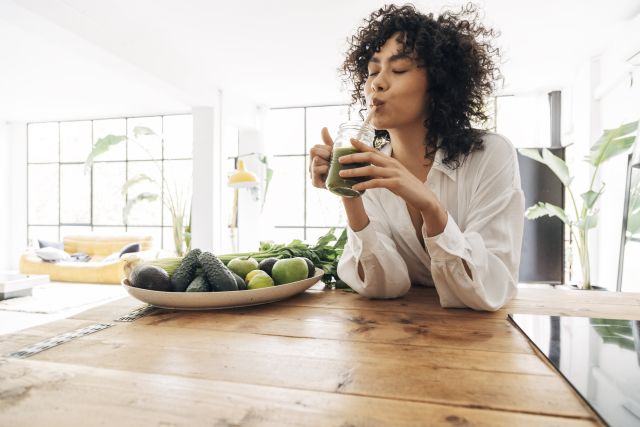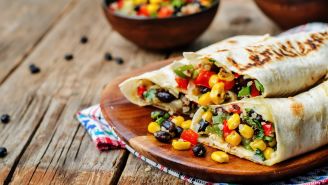Updated on June 14, 2022.
When you’re trying to eat healthfully, it may come as a shock that some supposedly healthy foods can come with a side dish of potentially harmful substances. Among the vast choices at the supermarket, trying to figure out what to pick and what to avoid can feel overwhelming. Inconsistent labeling can add another layer of complexity.
Here are four essential smart-shopping principles to follow the next time you go to the grocery store.
Minimize antibiotics
Many farms feed antibiotics to livestock to increase the animals’ size and meat production. This can be a problem because antibiotic-resistant infections are becoming more widespread across society. Giving antibiotics to animals when they aren’t sick promotes the development of resistance to these medicines, meaning they are less effective against infections when they’re needed most.
Why does this matter for you? Animals can carry antibiotic-resistant bacteria in their guts, which can be spread to humans in food. Curbing antibiotic-resistance in animals can help ensure that healthcare providers (HCPs) have antibiotics at their disposal to effectively treat these “superbug” infections in humans, should you or someone you know ever catch one.
What to buy: There are many antibiotic-related labels to sift through. Look for phrases such as “raised without antibiotics” or “no added antibiotics.” If a package has that label plus a “USDA Process Verified” logo, the USDA has verified the no-antibiotic claims.
Eat organic—and avoid synthetic pesticides—when you can
While eating organic produce may have some benefits, such as overall sustainability and global impact, their potential benefits for human health is still under debate. Some studies have shown that certain organic foods may contain slightly higher levels of nutrients like omega-3 fatty acids and lower levels of certain toxins like cadmium (a metal found in synthetic fertilizers that has been linked to kidney damage and some types of cancer).
The main reason that many folks tend to buy organic foods is to avoid consuming those grown or made using synthetic fertilizers and pesticides. (Note that while organic foods are not grown using synthetic fertilizers, producers may still use natural pesticides and certain synthetic pesticides that are approved for organic farming. Many organic pesticides are less toxic than synthetic versions but they are not necessarily harm-free.)
What to buy: At the supermarket, you’ll see various versions of “organic” labels. If a food is labeled as organic, it means that it’s been USDA certified. Beyond that, here’s how to make sense of what you see on the label:
- “100 percent organic” foods may have a USDA seal, and they’re usually single ingredient products like eggs, fruits, or vegetables. If a product has more than one ingredient, all the ingredients must be organic to earn the 100 percent label.
- “Organic” means that at least 95 percent of ingredients are certified organic.
- “Made with organic” means that at least 70 percent of ingredients are organic.
- “Organic ingredients” means that less than 70 percent of ingredients are organic, although the product may contain some organic ingredients.
Note that “natural” is not the same as organic. Natural means the product does not have artificial colors, flavors, or preservatives, but it still may have been produced conventionally.
The fact is, organic foods can be more expensive than those grown conventionally. If organic is a little rich for your pocketbook, eating a wide range of foods can minimize your chances of exposure to a single type of pesticide. Also, some types of produce, even if not organic, have lower pesticide levels, such as mangoes, pineapples, and other fruits with thick peels. Certain vegetables—like cabbage and cauliflower—require less pesticide because they naturally repel pests. All in all, eating a varied diet rich in fruits and vegetables—organic or not—is always healthier than loading up on processed foods.
Seafood is good, but mercury is not
Some fish contain high amounts of mercury in the form of methylmercury. This can cause neurological damage, especially in fetuses and young children. But fish is a great source of protein, healthy fats like omega-3s, and other nutrients, so you don't want to leave them out of your diet.
What to buy: Aim for fish and seafood with lower mercury levels like wild salmon, sardines, mussels, rainbow trout, and Atlantic mackerel, and minimize or avoid those with consistently high levels, like shark, swordfish, tilefish, and king mackerel.
Your food containers may have potentially harmful chemicals
How you store your food makes a difference, particularly when it comes to plastics. While many companies are now producing containers free of bisphenol A (BPA), this chemical may be found in a wide range of plastic items, including the internal coating of canned foods, plastic water bottles, baby bottles, and food storage containers. While BPA has been linked to type 2 diabetes, heart disease, and fertility problems, its direct effect on human health has not been proven.
What to buy: The main route of exposure to BPA is through your diet. Minimizing the use of canned or processed foods or buying cans labeled “BPA-free” may lower your exposure to it. Store your food in BPA-free containers, such as glass, porcelain, stainless steel, or those labeled “BPA-free.” Because heat may break down containers that contain BPA and allow it to leach into your food, do not microwave food in plastic or put plastic in the dishwasher.







